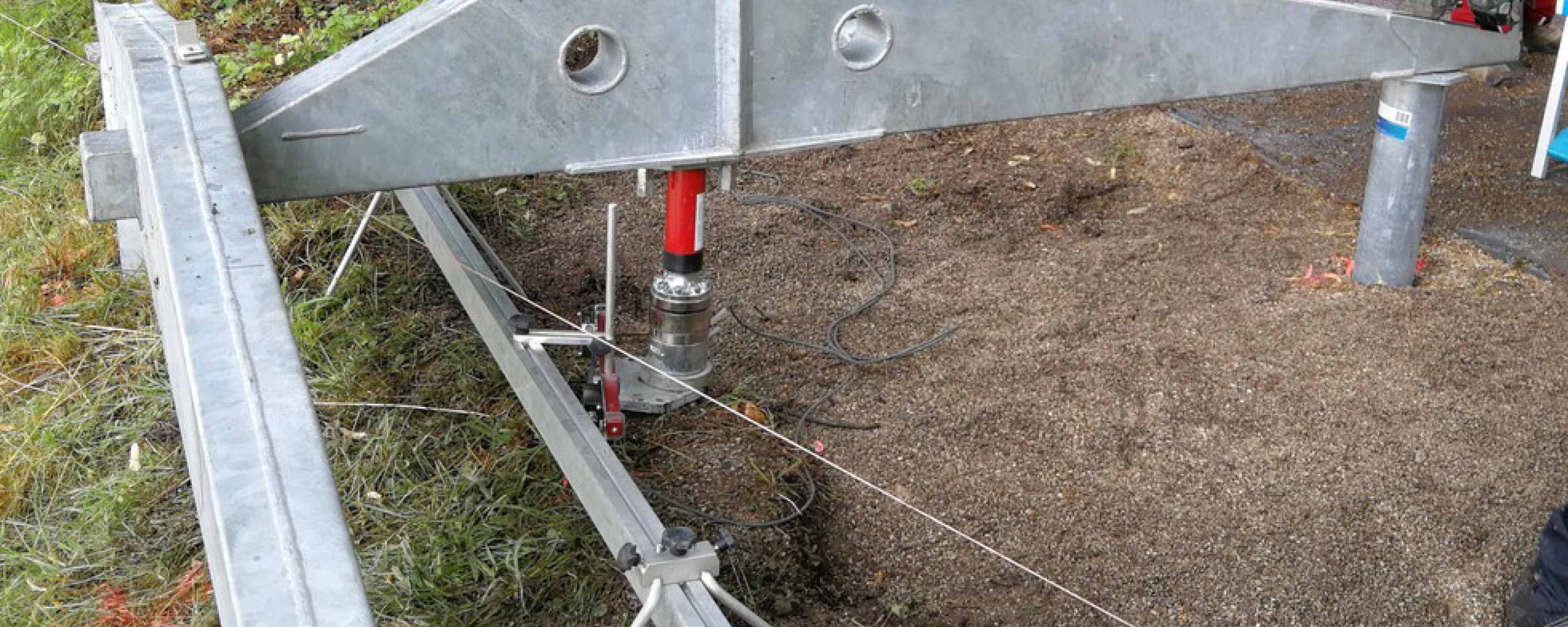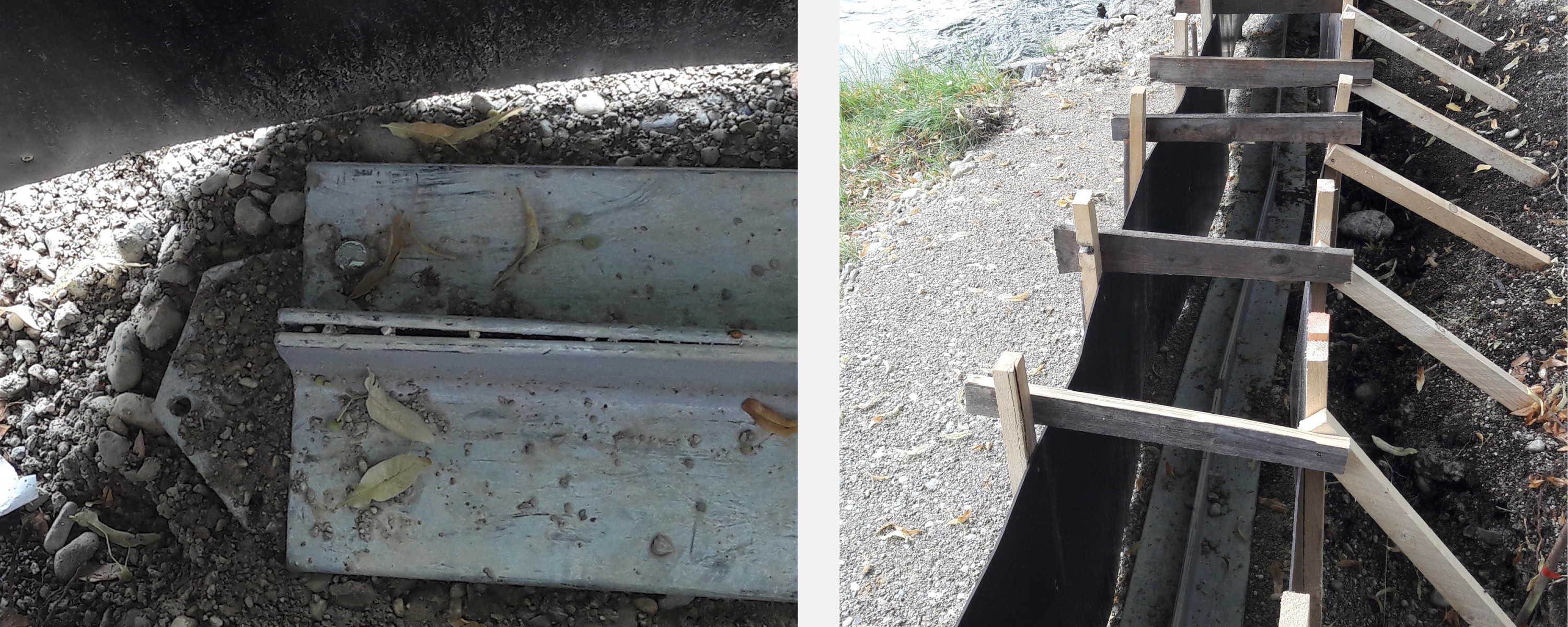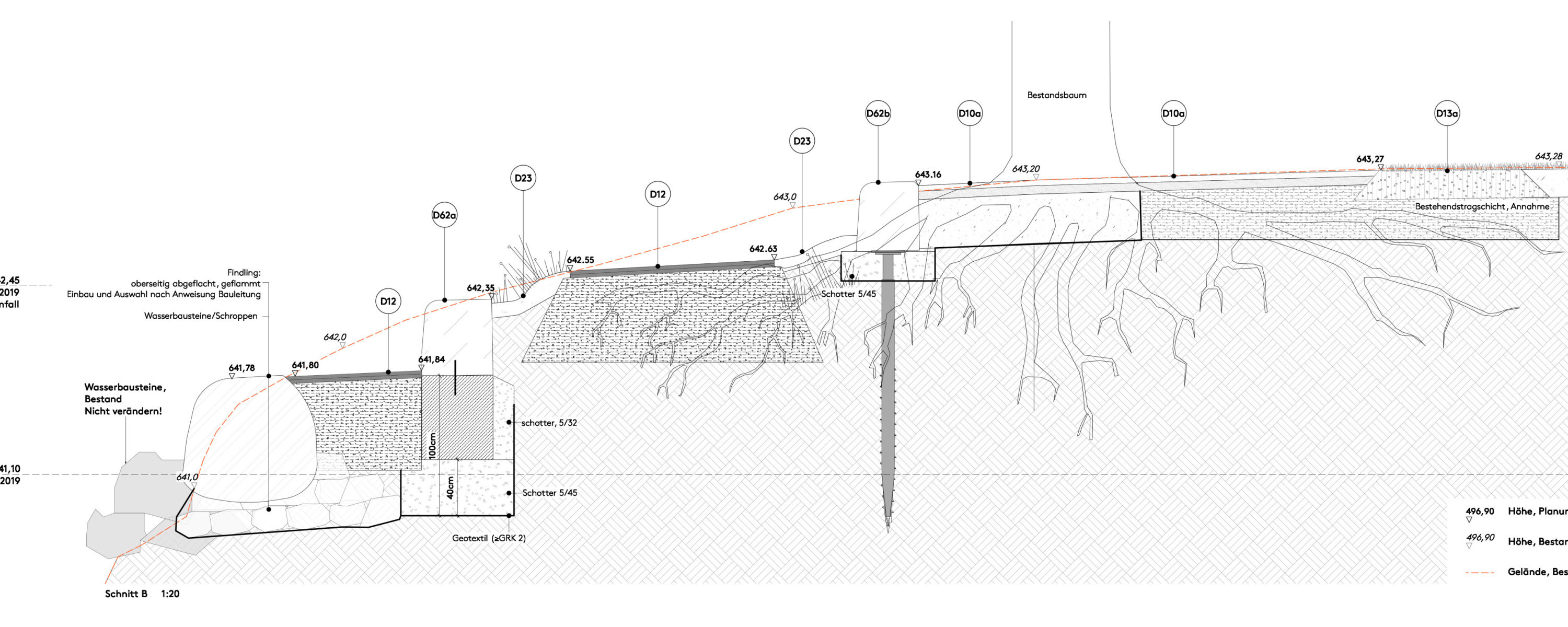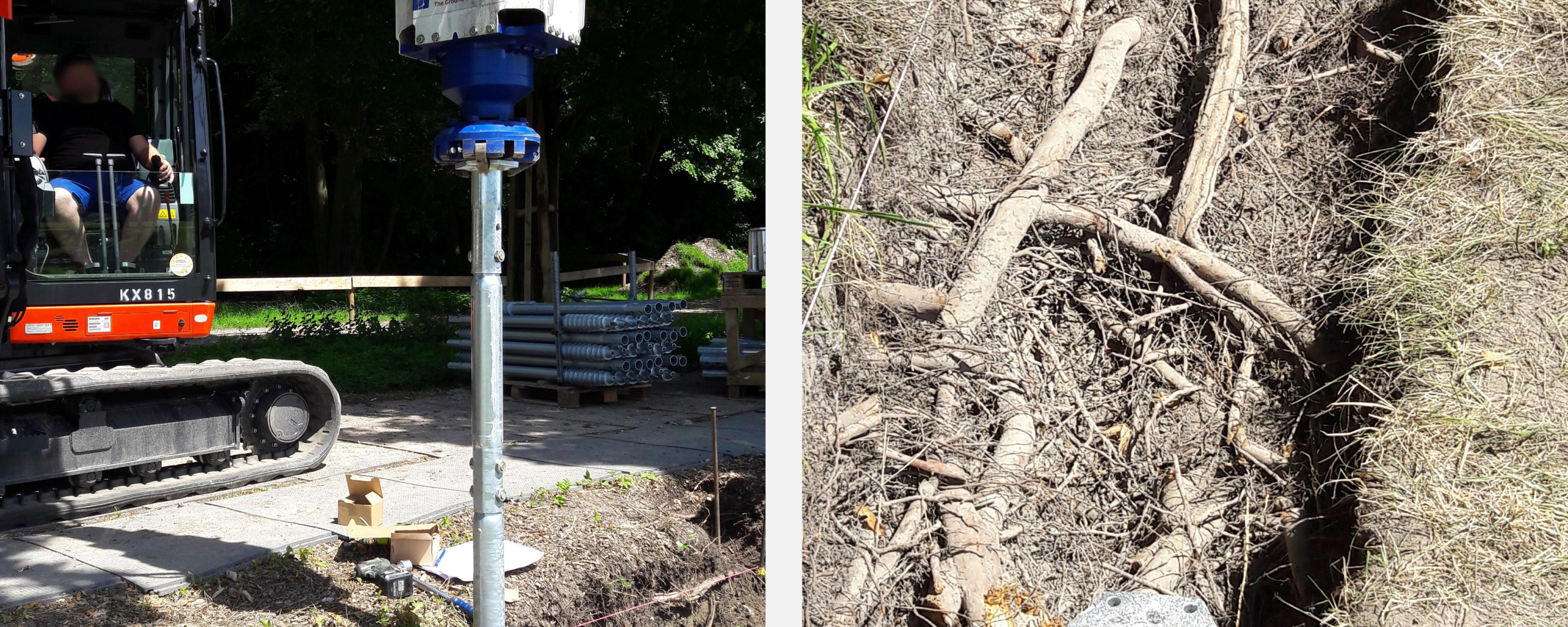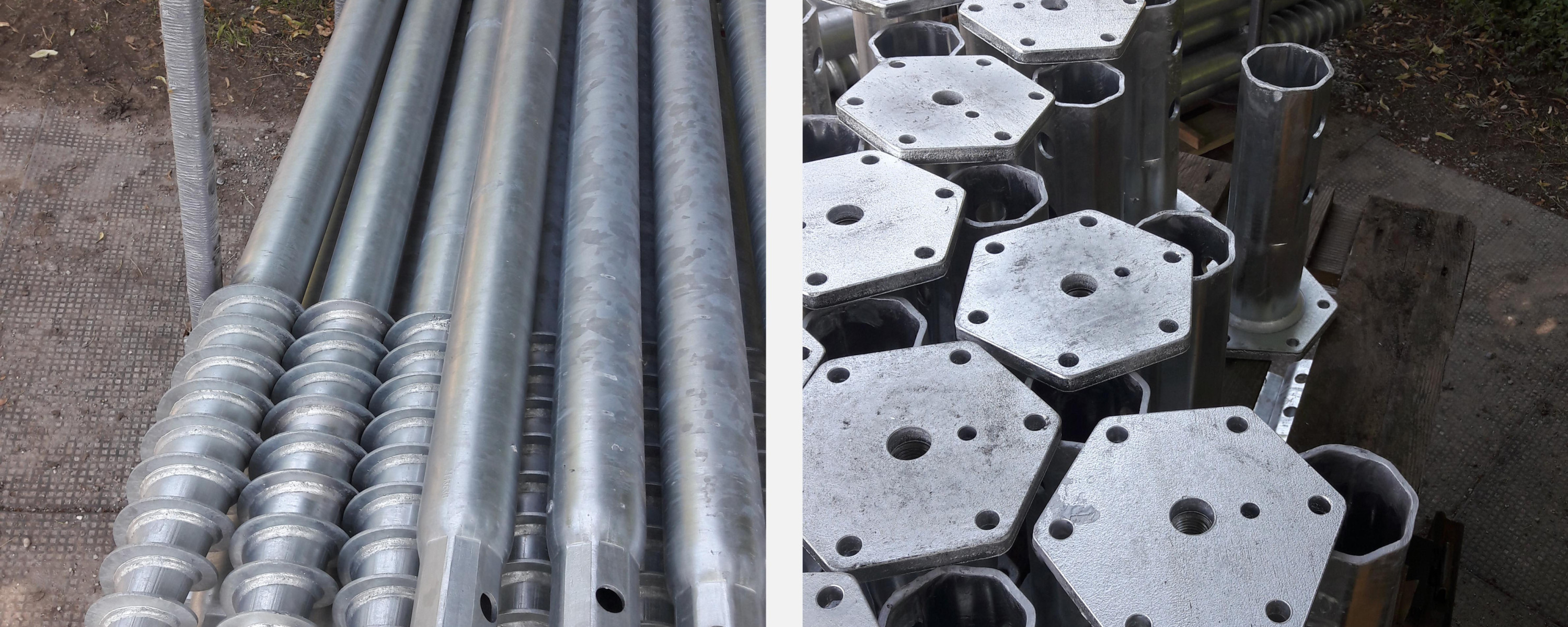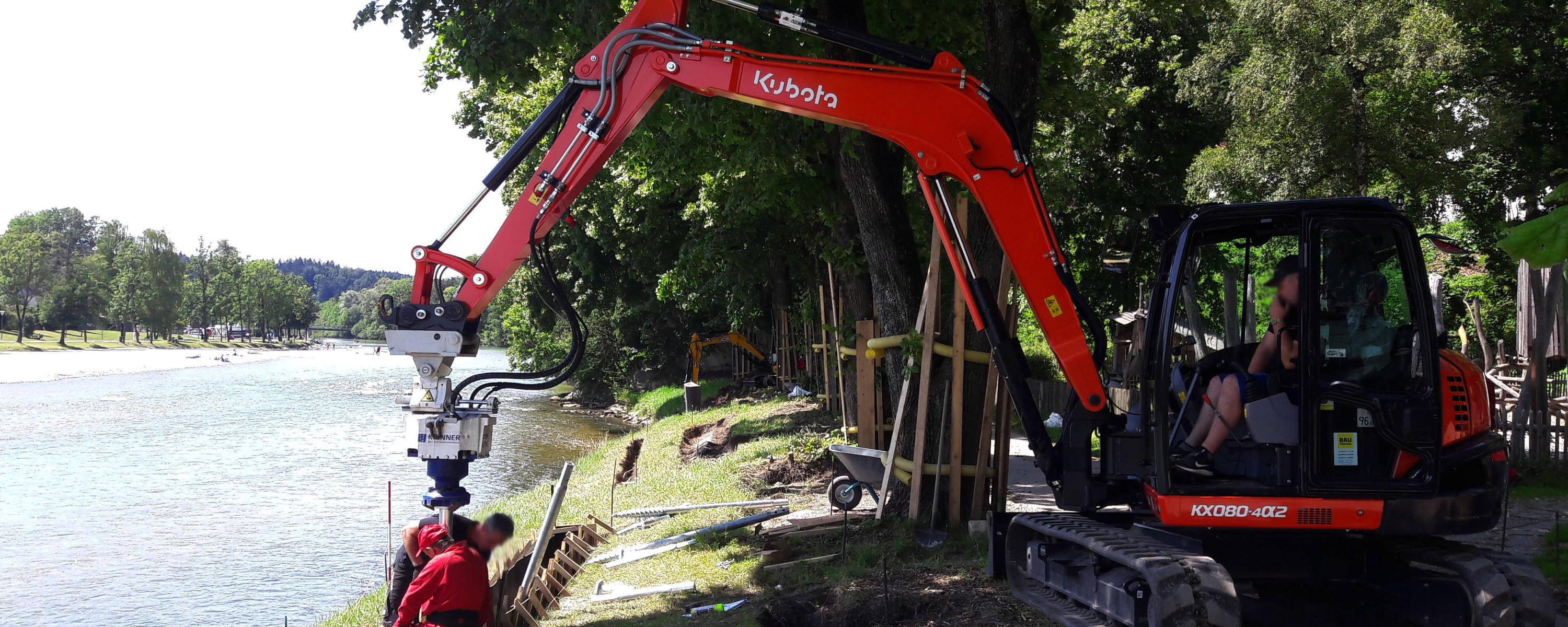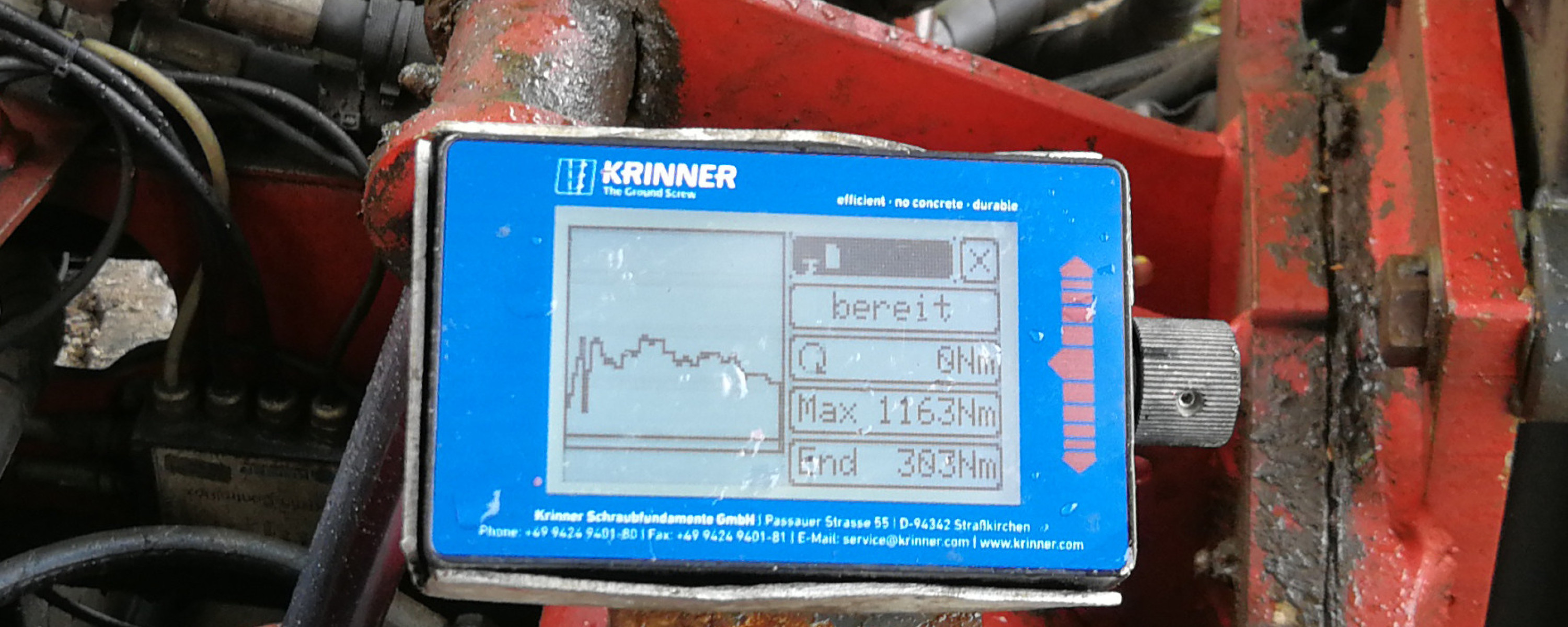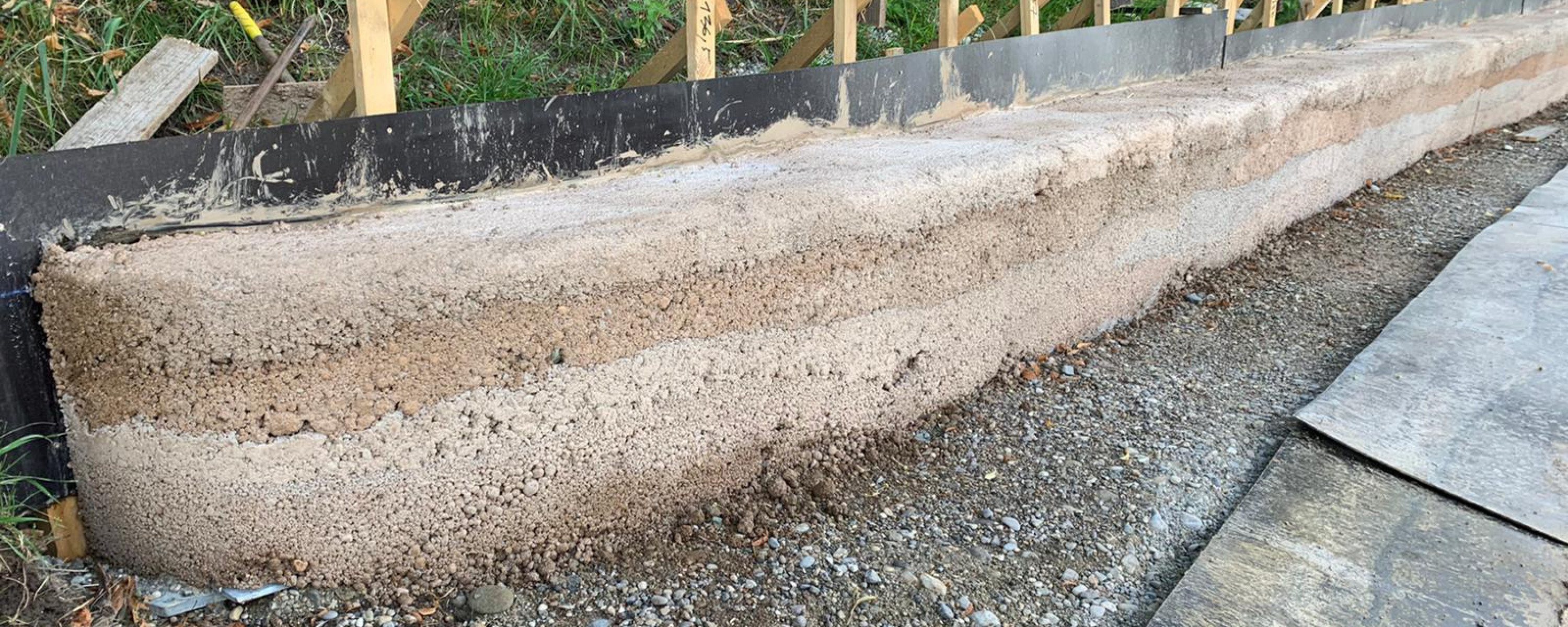Site report: The Taubenloch is a park on Säggasse in the middle of Bad Tölz, whose embankment on the southwestern side merges directly into the Isar River flowing past. Our concept for the redesign is to open up the overgrown embankment, provide it with large boulders for sitting on, and thus allow unhindered access to the water. Currently, small stamped concrete walls are being built to allow step-free access to the river water in the future.
Since the work for the foundations is taking place in the root zone of existing linden trees, we have opted for a technique that is as gentle as possible without the extensive ground work that would normally be required. Screw foundations are used for this. The galvanized metal rods with screw threads are screwed into the ground at specific points using an excavator with a special screwing device on the gripper arm. A suction excavator has previously gently removed the topsoil along the intended wall strips.
When screwing in, the excavator automatically measures the applied torque, which can be used to draw conclusions about the subsequent load-bearing capacity of the screw foundations. If the required load capacity is not yet sufficient for the subsequent weight pressure, another extension element is inserted and screwed in. The screw anchors used for this purpose were anchored between 2.5 and 5 meters deep in the ground.
Two connected L-steel sections are then screwed onto the anchors screwed in at specific points, which serve as supports for the stamped concrete walls. The shape of an inverted T gives the later stamped concrete wall shear resistance against the earth pressure of the slope. After screwing in, a special device measures the actual load-bearing capacity of the foundation.
A formwork then determined the shape of the seat walls. The workers filled concrete into these in layers and tamped it in place. This method of construction does not require additional reinforcement in the concrete.
Minimally invasive ground work on existing trees
Construction site report: The Taubenloch is an existing park in Bad Tölz whose embankment is to be opened up to the Isar. Currently, small stamped concrete walls are being constructed to allow step-free access to the river water in the future. The work for the foundations in the root area of existing lime trees must be carried out as gently as possible. Screw foundations are being used. Not an everyday construction method.


